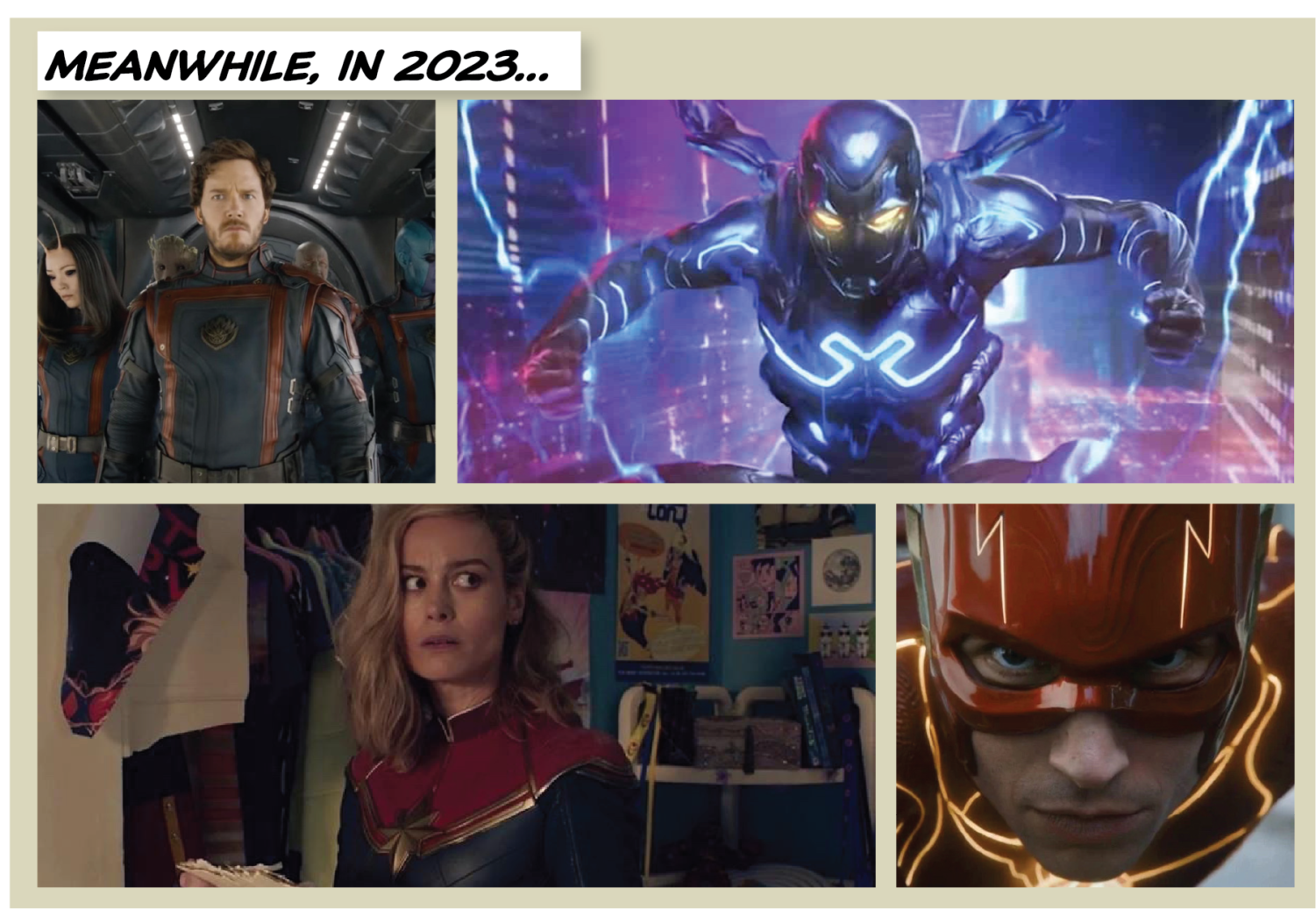In 2013, a year after Marvel’s “The Avengers” became one of the highest grossing movies of all time and the conclusion of Christopher Nolan’s “Batman” trilogy, a new Superman film was made to begin the brand new cinematic universe based on the DC comics. A decade later, in 2023, a year after the beginning of a new “The Batman Universe” helmed by Matt Reeves, a new Superman film will be released to kickstart a new superhero universe. The only difference now is that Marvel is not nearly as successful as it used to be. What changed? And what does it mean for superhero movies as a whole?
Since the release of “Avengers Endgame,” the Marvel Cinematic Universe has been slowly waning the interest of public opinion. The films have received worse critical reception, with “The Eternals’’ seeing the series’ first rotten score on Rotten Tomatoes. Two years later, “AntMan and The Wasp: Quantumania,” earned the same rotten rating. Marvel has started to suffer at the box office with “Ant Man” grossly underperforming at $600 million in total box office revenue. This number is low compared to previous movies and what is expected from a big-named MCU release, especially one designed to start the next major phase of the cinematic universe.
Things may look dire for Marvel, but it is still able to turn a profit. While Disney found success in the box office, its rival company in the superhero business, Warner Bros., has seen its flagship DC comics superhero franchise consistently underperform for years.
Although Warner Bros. has been able to find success in films set in its own standalone universes like “The Batman” and “Joker,” out of 10 years, the only mainline continuity film to breach a billion has been 2018’s “Aquaman.” The most recent film, “Shazam: Fury of the Gods” only managed to earn $127 million worldwide in its box office run, with a budget of $110 million.
The current decline in interest has a couple of explanations. The current blockbuster movie landscape shows a bigger period of diversity when it comes to what to watch in movie theaters. Last year we saw major hits, such as Joseph Kosinski’s “Top Gun Maverick,” James Cameron’s “Avatar: Way of The Water” and most recently Chad 6’s “John Wick: Chapter 4.” While these films are sequels, most of them have come at a far slower release time than that of the MCU, and they require knowledge of only one to three previous films. Compare that to the MCU; a new person wishing to catch up and fully comprehend the newest release needs to watch 30 movies and eight series on Disney Plus.
This is not to say the superhero movie genre is in the dumps. A Marvel movie has yet to actually lose money, and Marvel is still the biggest tentpole franchise in pop culture.
However, due to a common feeling of burnout for the series known as “superhero fatigue,” an increasing number of hoops to jump through to be caught up and a visual effects team that is being worked to the bone with fewer and fewer positive returns, the Marvel Cinematic Universe feels like an ever growing house of cards doomed to topple. That is, if a house of cards required billions of dollars to keep up.
The only series losing money at the moment is DC, and Warner Brothers —clearly aware the current plan is not working as intended — has been planning a rebooted universe led by James Gunn for about a year now. It hopefully marks the return of something the DC universe had needed for quite a while: a clear and uninterrupted vision led by a filmmaker who knows how to make successful superhero movies, emphasis on uninterrupted.
This is not to say a roadmap is the key to the future of superhero movies. In fact, some would likely prefer more standalone films and series over something as exhaustive and difficult to manage as a cinematic universe. But the future of the genre, at the moment, feels entirely unpredictable.
The only thing we know for certain is there will always be fun and exciting movies for people to watch in the theater, and a new Batman film will likely debut every few years.





